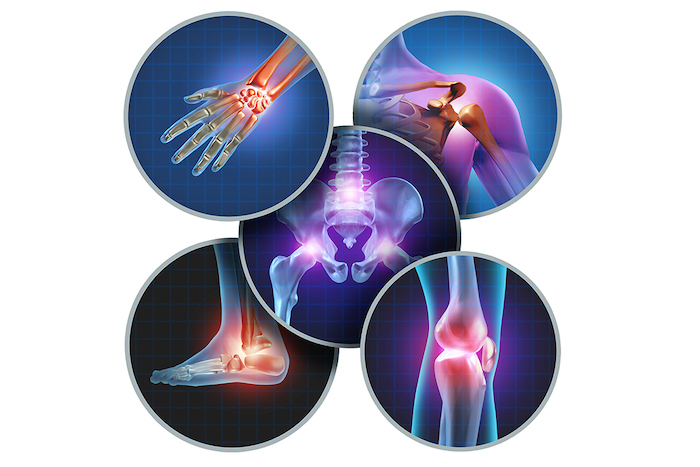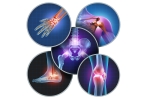
The joint inflammation that defines arthritis can have a major impact on your mobility and quality of life. While there have been many advances in the field of joint replacement surgery, it’s still a last-resort treatment. The conventional wisdom in contemporary medicine leans toward exhausting all conservative treatments before recommending a surgical solution.
This is particularly true with arthritis since, to begin with, it’s not a single condition with a single cause. Osteoarthritis and rheumatoid arthritis, the two most common forms of the condition, have completely different origins, so treatment alternatives are also completely different. With May being National Arthritis Awareness Month, join us as we examine just a few of the many nonsurgical options you may have to relieve arthritis pain without going under the surgeon’s knife.
Causes of Arthritis
Osteoarthritis is often a wear-and-tear condition, where injury or aging causes inflammation in various joints in your body. The cartilage that covers the ends of your bones starts to wear out and break down. When it reaches the point where there’s bone-to-bone contact, you may have restricted mobility and pain, but both these symptoms begin even before the cartilage is fully compromised.
Rheumatoid arthritis originates as an autoimmune condition that attacks the synovial capsules that surround your joints. In its advanced stages, rheumatoid arthritis can destroy both cartilage and bone, but the inflammation of the synovial membrane causes pain and mobility issues before tissue damage occurs.
Drug Therapy
Over-the-counter medications that relieve arthritis symptoms are common. You’re likely aware of several that make these claims through television ads, and some can be quite effective in masking pain or relieving inflammation. Typically, these are best in the early stages of osteoarthritis and, if it’s a nonsteroidal anti-inflammatory drug (NSAID), it may help with the inflammation of rheumatoid arthritis.
Prescription medications expand treatment options. Corticosteroids — taken orally, applied as a cream, or injected into an affected joint — can be quite effective, if only temporarily, and the side effects of these drugs limit the amount of time you can take them.
Antirheumatic drugs slow your immune system, interrupting the attack on rheumatic joints. Similarly, engineered drugs called biologic response modifiers can interrupt the actions of an immune system response.
Counterirritant substances, often including menthol or the pepper extract capsaicin, cause interference with nerve signals that hide pain originating from an arthritic joint. Generally applied as a cream or other topical ointment, many of these products are available both over-the-counter and in prescription strengths.
Physical Therapy and Exercise
Strengthening specific muscles that support an arthritic joint can help take some of the load or strain off that joint, and in doing so, relieve some of the pain. Splints and braces may also help. Though it sounds counterintuitive, particularly with pain and mobility problems, light exercise, such as walking, for example, is often effective, particularly with osteoarthritis, as a pain relief technique.
Losing weight, improving your diet, and staying hydrated also help the process of taking the burden off arthritic joints.
New Treatments
One problem the body faces when regenerating itself is the number of use joints get compared with the time needed to adequately repair cartilage tissue. Stem cell therapy, with stem cells harvested from your own body, then injected into the affected joint, can speed your body’s natural recovery efforts.
A technique using radiofrequency energy to affect the way nerves in an arthritic joint transmit pain has been approved by the Food and Drug Administration, and it offers a non-surgical pain relief option. While it doesn’t help improve the arthritic condition, it may significantly reduce your pain for 6-12 months.
Precision Pain Care and Rehabilitation has four convenient locations in Richmond Hill – Queens and New Hyde Park, Lindenhurst, and Valley Stream – Long Island. Call the Queens office at (718) 215-1888, or (516) 419-4480 for the Long Island offices, to arrange an appointment with our Interventional Pain Management Specialist, Dr. Jeffrey Chacko.













